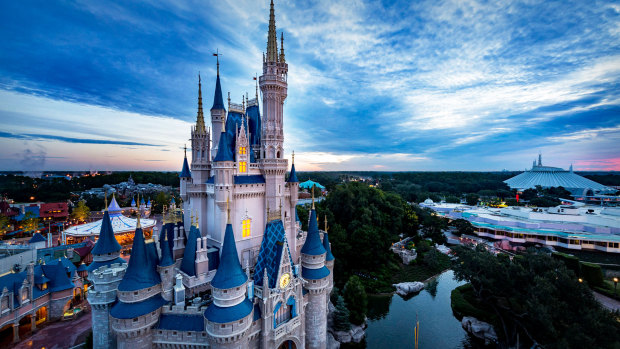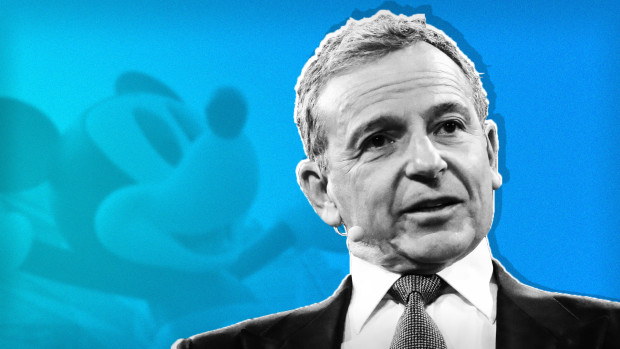
In a Disney movie, the true villains -- the so-called "big bad" -- sometimes do not emerge right away. When you watch "Star Wars" for the first time, for example, Darth Vader seems to be the villain.
He's really scary, chokes his own people to death for very minor infractions, and has that whole menacing breathing thing. In reality, though, while Vader does terrible things, he turns out to be just a pawn in a much bigger game.
DON'T MISS: Disney and DeSantis' 'Woke' War Enters a New Chapter
We learn that Emperor Palpatine isn't just Darth Vader's master; he's actually been playing a long game to take over the universe. Vader, the former Anakin Skywalker, does some villainous things, but he's just another sad soul being manipulated by the actual villain.
Florida Gov. Ron DeSantis looks like the big bad in the current struggles at Disney World. He certainly wants to be seen as the person crusading against a company that dares to show gay people in its movies and television shows while it stands up for LGBTQ+ rights (albeit mostly after being pushed by its employees).
In reality, Walt Disney (DIS) -) has not struggled because DeSantis has targeted the company. The right-wing presidential candidate has indeed cost the company some business, but the reality is that Disney isn't Bud Light. People can talk about a boycott, but that's not so easy when their kids want to watch Pixar, Star Wars, and Marvel content.
You can substitute pretty much any light beer for Bud Light, but that's not as easy when it comes to theme-park trips. Sure, Comcast's (CMCSA) -) Universal Studios offers a viable alternative, but fans of one tend to want to visit the other.
No, DeSantis is not the big bad in the Disney story. That villain would be Disney itself.

KENA BETANCUR/AFP via Getty/TheStreet
This Is Disney World's Real Problem
A Disney World vacation has become astoundingly expensive and out of reach for many Americans.
Let's look at a simple five-day visit with single-park (not Park Hopper) tickets for a family including two adults, one child under 10 and another over 10. That's three adults, and one child admission, and it will cost you $2,188 just for park admission during one of the cheaper (but not the cheapest) periods to visit.
If you want to stay on property, a Value Resort (the cheapest choice), costs around $200 per night. It can be a little less or a lot more, but that's the rough average. If you assume $10 per person for breakfast, $20 for lunch, and $40 for dinner each day, that's another $1,400 before you add a single snack.
That puts a basic Disney World vacation -- one with the lowest-class of tickets, where you stay at the cheapest hotel and eat modestly -- at roughly $4,588 without airfare. You can do two weeklong Royal Caribbean (RCL) -) cruises in a balcony room for less than that in many cases and a lot of vacations won't cost nearly as much.
Disney Has a Theme-Park-Pricing Problem
Disney Chief Executive Bob Iger says his company has made some mistakes. He talked about the theme-park-pricing issue during a recent Morgan Stanley event.
"I've always believed that Disney was a brand that needed to be accessible. And I think that in our zeal to grow profits, we may have been a little bit too aggressive about some of our pricing," he said.
That's a challenge because Disney World does not offer a peak experience for guests when it operates at maximum capacity.
"It's tempting to let more and more people in. But if the guest satisfaction levels are going down because of crowding, that doesn't work," he said.
"We had to figure out how we reduce crowding but maintain, obviously, our profitability. And we did that well, but we have to be careful about that as well because, in doing that, you're actually -- you actually end up increasing the price or putting features into your pricing that are viewed by some consumers perhaps being a little too aggressive, and that's where we're being careful about."
Disney has done exactly that by replacing the free FastPass+ system with the current added-fee Genie+/Lightning Lane offering. The problem is that on many days, Disney has more demand than supply.
Iger hopes to address this problem in Florida and California.
"As we continue to invest in those businesses, which is essentially building out new capacity or new attractions, it gives us the ability to ... service more people. The more attractions you have, obviously, the more people have to do," he added.
Get investment guidance from trusted portfolio managers without the management fees. Sign up for Action Alerts PLUS now.







